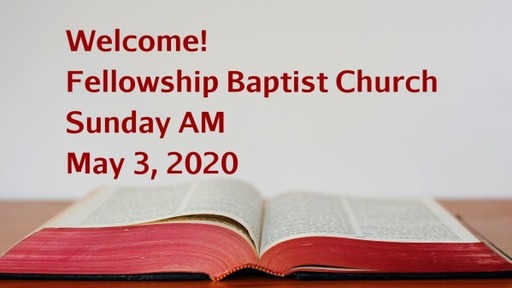Changing Plans

A leading member of the church at Jerusalem who also had prophetic gifts (Acts 15:22, 32). Silas may be a Semitic name, possibly še’îlā’, the Aram. form of Saul. There is little doubt that he is to be identified with ‘Silvanus’ (2 Cor. 1:19; 1 Thes. 1:1; 2 Thes. 1:1; 1 Pet. 5:12), which is probably the Latinized form of ‘Silas’, though it may be a separate cognomen chosen for its similarity.
In Acts Silas was sent by the church at Jerusalem to welcome into fellowship the Gentiles converted through the church of Antioch (Acts 15:22–35). When Paul and Barnabas quarrelled about John Mark, Barnabas went off with Mark and Paul took Silas as his companion on his second missionary journey (15:36–41). The fact of his Roman citizenship (16:37–39) may have been one of the reasons for the choice, and his membership of the Jerusalem church would have been helpful to Paul. His role seems to have been to replace Mark rather than Barnabas.
The son of a mixed marriage; his mother, who evidently instructed him in the Scriptures, was a Jewess and his father a Greek (Acts 16:1; 2 Tim. 1:5). He was a native of Lystra (Acts 16:1) and was highly esteemed by his Christian brethren both there and in Iconium (Acts 16:2). When he became a Christian is not specifically stated, but it is a reasonable inference that he was a convert of Paul’s first missionary journey, which included Lystra in its itinerary, and that on that occasion he witnessed Paul’s sufferings (2 Tim. 3:11).
He was first entrusted with a special commission to Thessalonica to encourage the persecuted Christians. He is associated with Paul and Silvanus in the greetings of both Epistles directed to that church, and was present with Paul during his preaching work at Corinth (2 Cor. 1:19). He is next heard of during the apostle’s Ephesian ministry, when he was sent with Erastus on another important mission to Macedonia, whence he was to proceed to Corinth (1 Cor. 4:17).
Thessalonica has functioned as a key city in the Mediterranean from the Macedonian era to the present. The Macedonian king Cassander founded Thessalonica around 315 BC, naming the city after his wife, Thessalonike (“victory of Thessaly”). The city was built on or near the site of ancient Therme and incorporated approximately 25 other villages in the area—demonstrating it was of prodigious size from an early date (Strabo, Geography. 7.7, 21; Papagiannopoulos, History, 14).
Under Roman rule (167 BC–AD 395), Thessalonica functioned as one of the most important cities in the empire, having both a vast harbor and prevalent location along a major trade route.
During this same century (146–120 BC), the Romans constructed the via Egnatia (Egnatian Way), an expansive highway that connected the city of Dyrrachium with Byzantium and ran through Thessalonica. Paul, Silas, and Timothy probably travelled on this highway to Thessalonica during their second missionary journey (Acts 17:1). Situated nearly directly across the Adriatic is Brindisi, the terminal city for the other major highway of the empire: the via Appia. Thessalonica had a direct connection to Rome by these two major roadways. Its location on the via Egnatia, along with the Romans’ substantial development of the harbor, increased Thessalonica’s significance within the Republic
Thessalonica was built on a natural harbor on the Aegean Sea, which gave it several trade advantages in the fourth century BC, by Cassander, a contemporary of Alexander the Great. Thus it prospered from that start, with both sea and land trade (it lay on the Via Egnatia, the major thoroughfare of the province). By Paul’s time it was the largest, most populous, and wealthiest city in Macedonia.
It was also the most pro-Roman city in Macedonia, and so Rome made it the provincial capital. It was almost a second Rome, and as Rome turned more and more against Christianity, so did Thessalonica. Like Rome, they saw the emphasis on the deity of Christ as a threat to the deity of the emperor. When they supported Mark Antony and Octavian (who became Caesar Augustus), they were granted by Mark Antony the right to be a “free city.” Its fame and fortune continued to grow. They built a temple to Augustus and named him and his revered uncle Julius Caesar gods. So the charges against Paul and his team were especially heinous to them.
They resembled Athens in their many gods and Roman cults. They worshipped not only the Roman gods but the Egyptian gods as well. Roman religion was amazingly pluralistic, and the average person had not only a patron god/cult they especially worshipped but countless others as well. Everyone was expected to participate in public worship observances. When Paul said in 1 Thessalonians 1:9, “you turned to God from idols,” he was making a vast understatement.
Believers must communicate the gospel
Preaching the Scriptures
Persuading the Listeners
Discipling the Converts
Believers must trust God in difficult times
We believe that what these Jews said of the Apostles, was just a downright wilful lie. They knew better. The Apostles were not the disturbers of states. It is true, they preached that which would disturb the sinful constitution of a kingdom, and which would disturb the evil practices of false priests; but they never meant to set men in an uproar. They did come to set men at arms with sin; they did draw the sword against iniquity; but against men as men, against kings as kings, they had no battle; it is with iniquity and sin, and wrong everywhere, that they proclaimed an everlasting warfare
But they said a great true thing; for Christ’s gospel does turn the world upside down. It was the wrong way upwards before, and now that the gospel is preached, and when it shall prevail, it will just set the world right by turning it upside down.